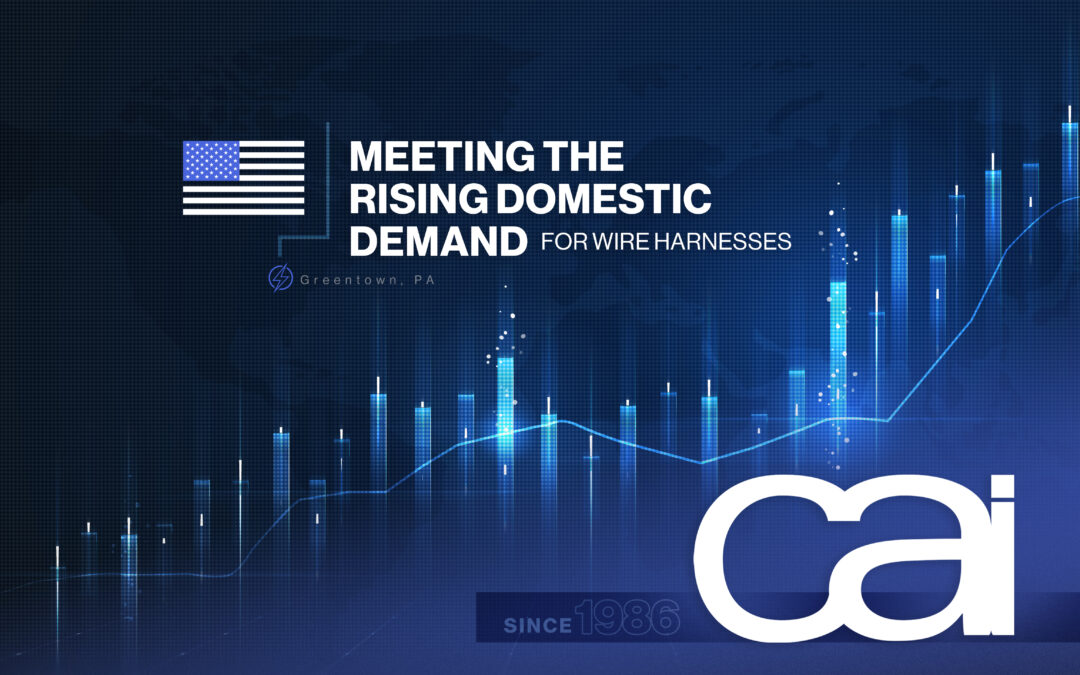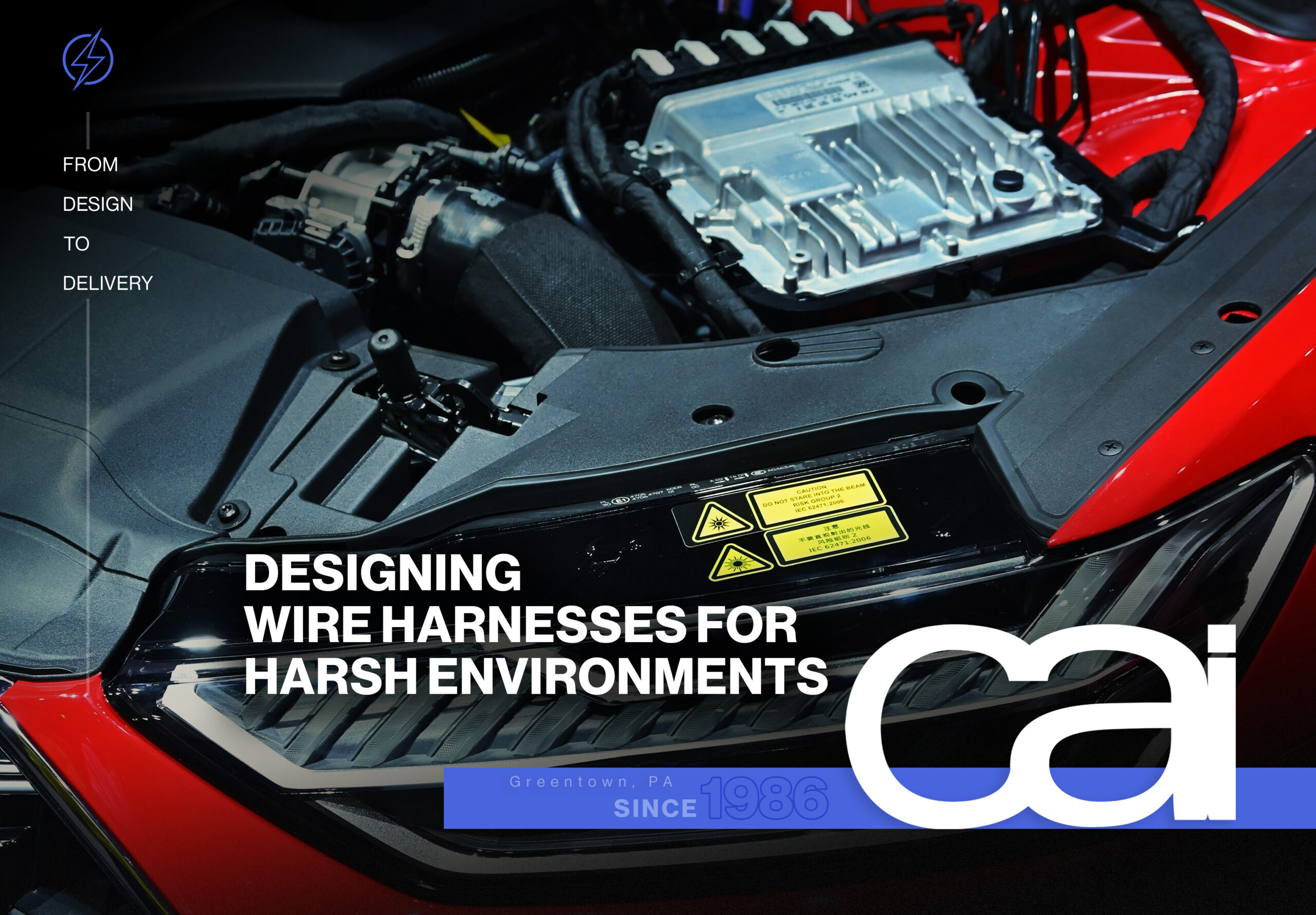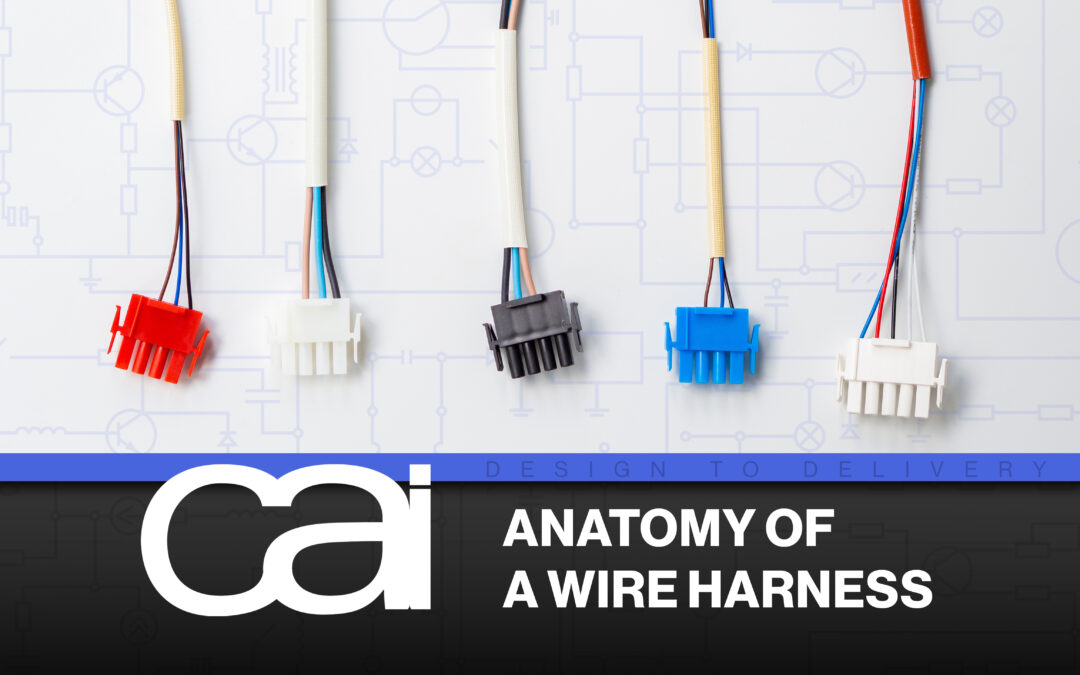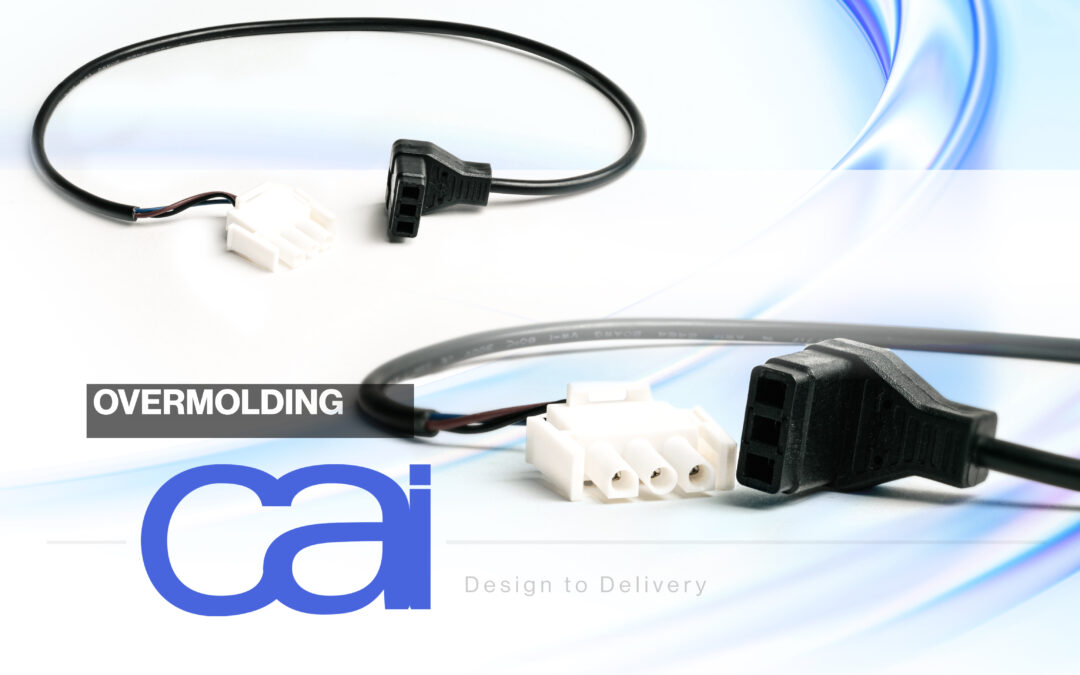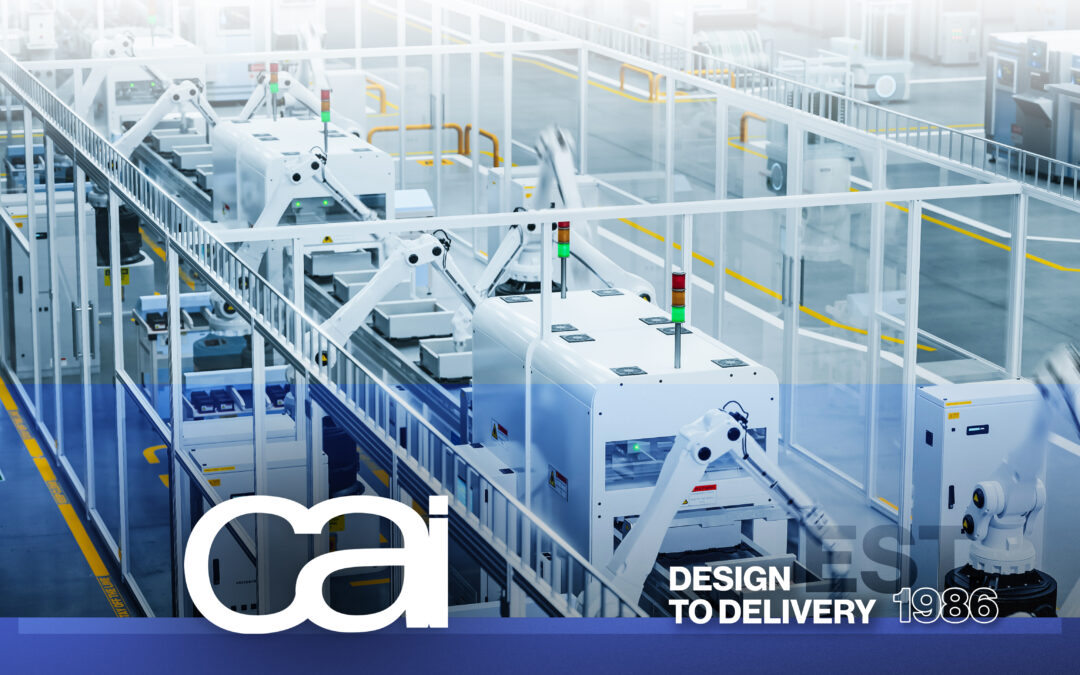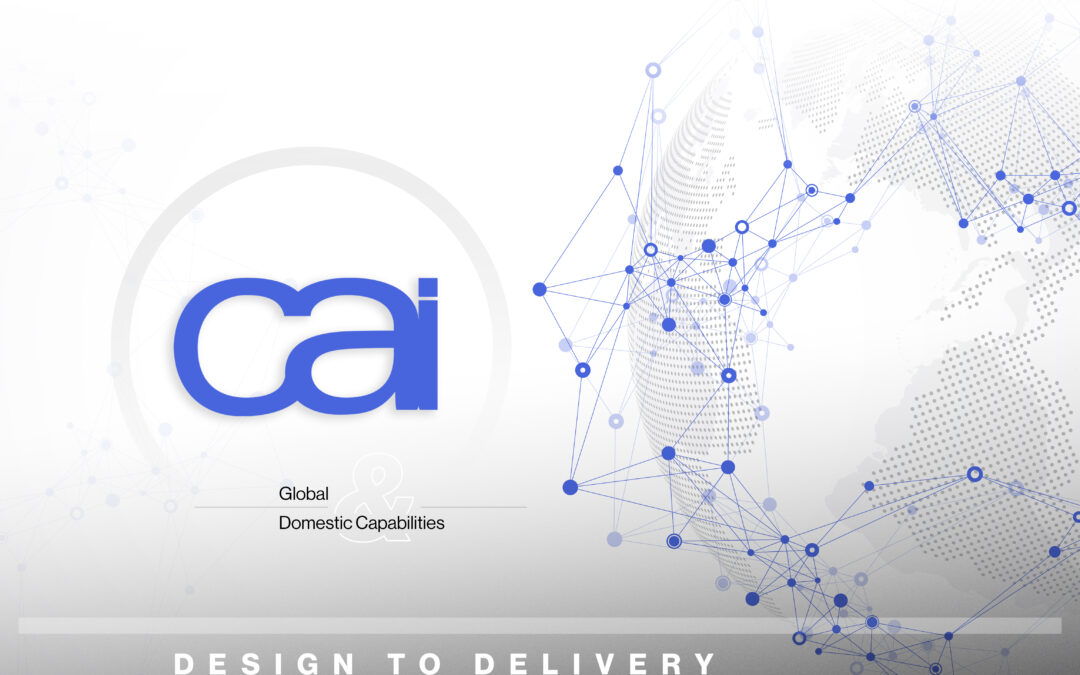Extreme Conditions Call for Extra Consideration in Wire Harness Manufacturing
Wire harnesses must be carefully crafted in order to effectively supply power and data to the machines and devices we use in our homes and businesses every day. The same is true for harnesses developed for harsher environments, such as those found in industrial, aerospace, marine, telecom, oil & gas, automotive, and construction settings.
However, because of the various inherent threats — including extreme temperatures, moisture, and vibration — manufacturing wire harnesses for demanding applications often requires special designs, specific materials (e.g. PVC, TPU, Teflon, silicone), and processes like heat-shrink tubing and overmolding to ensure optimal performance, reliability, and safety. Likewise, not accounting for these environmental conditions can lead to a host of unwanted problems, including corrosion, safety issues, and electrical malfunction.
For over 35 years, CAI has manufactured high-quality wire harnesses for nearly every type of environment and industry across the globe. Talk to us today about how we can help design and manufacture ones perfect for your unique application. If your harness needs to withstand harsh conditions, here are some key factors we may have to consider throughout the production process:
1. Extreme Temperatures
Maximum and minimum operating temperatures must be accounted for in order to craft harnesses that stand up to extreme heat or cold. For high temps, temperature-resistant and thermally stable materials, such as braided shielding, silicone rubber, and ceramic fiber insulation, are often utilized. Cold temperatures require flexible, temperature-resistant wires, coatings, and more to prevent brittleness and cracking.
2. Water & Moisture
Able to disrupt the flow of electricity within a harness, water and moisture can wreak havoc on electrical systems, which makes water-resistance a top priority for harnesses, especially those intended for the outdoors and humid atmospheres. Water can cause everything from malfunctions and deterioration to fire/shock-causing short circuits, which makes proper design, material selection, protective sleeves, and sealing of terminals and connectors essential.
3. Vibration & Mechanical Stress
Constant movement and vibration can lead to rapid wear and tear and eventual failure of wire harnesses if they are not crafted correctly, with rugged, vibration-proof, stress-resistant design and materials, from durable, flexible wires to high-strength connectors. Strain relief features, such as grommets, clips, or brackets, are often applied to prevent stress at junctions and connections.
Braided or spiral-wrapped sleeving can increase protection against mechanical wear and vibration, reducing the risk of breakage due to continual bending or stretching. Meanwhile, proper wire routing through protective conduits or channels can help shield from physical damage.
4. Chemicals
Exposure to chemicals or solvents, as in factories or marine settings, can lead to chemical degradation if a wire harness doesn’t feature chemical-resistant design and materials. From tinned wires and conformal coatings to protective sleevings made of fiberglass or polyester, there are a number of ways to ensure that a harness thrives in a highly corrosive environment.
5. Fire
Industrial, automotive, aerospace, and other settings that feature high temperatures, UV concerns, and complex electrical systems are often more prone to fire. Their wire harnesses must therefore have designs and materials, especially insulation and protective coverings, that are fire-resistant or self-extinguishing, in order to mitigate fire hazards.
6. Electromagnetic Interference (EMI)
In environments with high electromagnetic interference (EMI), such as in industrial plants or the military, twisted pair configurations and braided or foil shielding are widely used techniques for preventing or minimizing signal disruption that can adversely affect electrical systems and optimal performance.
7. Standards & Regulations
To ensure wire harnesses meet the safety and durability requirements of their future environments, there are a number of industry-specific standards manufacturers must adhere to, including those defined by UL (Underwriters Laboratories), MIL-SPEC (Military Specifications), and SAE (Society of Automotive Engineers). Careful development, conformance to applicable industry standards, and rigorous testing of the wire harness under simulated conditions are necessary steps to withstand harsh enviornments.
8. Redundancy
Mission-critical applications, such as military and aerospace, often require built-in redundancies, or the intentional duplications of critical components/functions to act as a backup or fail-safe. Allowing for continued operation when a wiring system would otherwise fail, redundancies in wire harness design, along with high-quality materials and components, ensure long-term reliability and overall safety.
Anticipating and accounting for environmental factors is key to designing an effective and reliable wire harness for demanding conditions. Then it’s about choosing the right design and materials for the job, manufacturing the harness correctly, and testing it thoroughly.
When you need wire harnesses for harsh environments, CAI is the trusted manufacturer you can count on to do it right, according to your specifications and time table. Connect with us today about your unique electrical application, and we’ll work with you to make it happen.
